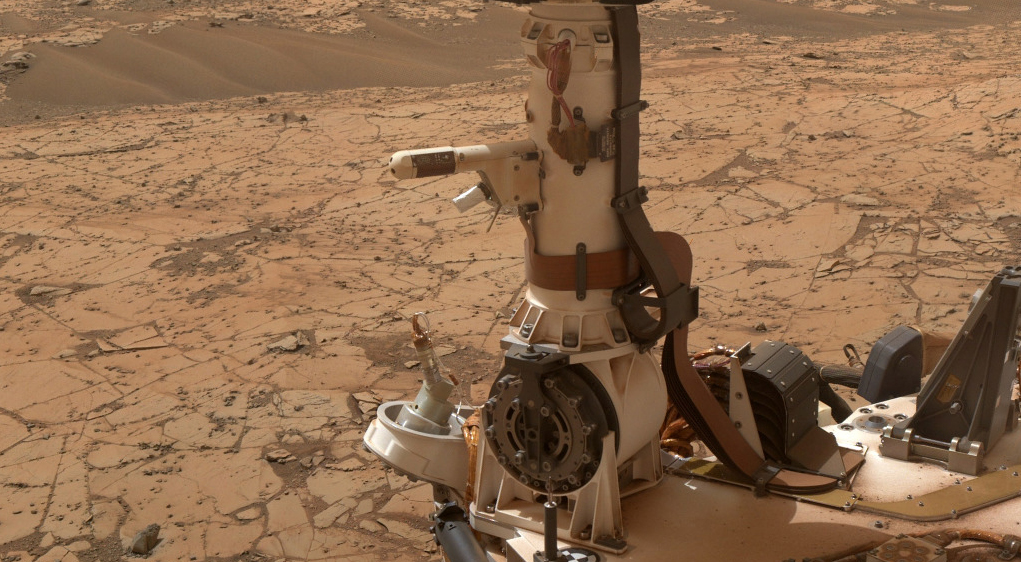Mars Environmental Dynamics Analyzer on:
[Wikipedia]
[Google]
[Amazon]
 The Mars Environmental Dynamics Analyzer (MEDA) is an instrument on board the Mars 2020 '' Perseverance'' rover that will characterize the dust size and morphology, as well as surface weather.The Mars Environmental Dynamics Analyzer (MEDA): A Suite of Environmental Sensors for the Mars 2020 Rover
The Mars Environmental Dynamics Analyzer (MEDA) is an instrument on board the Mars 2020 '' Perseverance'' rover that will characterize the dust size and morphology, as well as surface weather.The Mars Environmental Dynamics Analyzer (MEDA): A Suite of Environmental Sensors for the Mars 2020 Rover
Tamppari, L.; Rodriguez-Manfredi, J. A.; de la Torre-Juárez, M.; Bridges, N.; Conrad, P. G.; Genzer, M.; Gomez, F.; Gomez-Elvira, J.; Harri, A. M.; Lemmon, M. T.; Martinez, G.; Navarro, S.; Newman, C. E.; Perez-Hoyos, S.; Prieto, O.; Ramos, M.; Saiz-Lopez, A.; Sanchez-Lavega, A.; Schofield, J. T.; Smith, M. D. ''American Geophysical Union'', Fall Meeting 2015, abstract #P11B-2097Mars 2020 - MEDA Specifications
NASA, 2016. Specifically, the information obtained will help address future human exploration objectives, as dust sizes and shapes, daily weather report and information on the radiation and wind patterns on Mars, that are critical for proper design of in situ resource utilization systems. MEDA is a follow-on project from REMS, of the ''Curiosity'' rover mission. MEDA has an increased scope, with greater data collection on Mars dust which contributes to overall Mars program objectives and discovery goals. The instrument suite was developed and provided by the
(PDF). J. A. Rodriguez-Manfredi, M. de la Torre, J. S. Boland, et al. 3rd International Workshop on Instrumentation for Planetary Missions (2016). MEDA is a suite of environmental sensors designed to record dust optical properties and six atmospheric parameters: wind speed/ direction, pressure, relative humidity, air temperature, ground temperature, and
''Mars 2020 Rover'', NASA. 2015. The technology used on MEDA was inherited from the REMS package operating on the ''Curiosity'' rover and the TWINS package on InSight lander. The sensors are located on the rover's mast and on the deck, front and interior of the rover's body. It records data whether the rover is active or not, at both day and night. The instruments will collect data for 5 minutes every 30 minutes.

Mars 2020 Home site
{{Satellite and spacecraft instruments Mars 2020 instruments Meteorological instrumentation and equipment Space science experiments INTA spacecraft instruments
 The Mars Environmental Dynamics Analyzer (MEDA) is an instrument on board the Mars 2020 '' Perseverance'' rover that will characterize the dust size and morphology, as well as surface weather.The Mars Environmental Dynamics Analyzer (MEDA): A Suite of Environmental Sensors for the Mars 2020 Rover
The Mars Environmental Dynamics Analyzer (MEDA) is an instrument on board the Mars 2020 '' Perseverance'' rover that will characterize the dust size and morphology, as well as surface weather.The Mars Environmental Dynamics Analyzer (MEDA): A Suite of Environmental Sensors for the Mars 2020 RoverTamppari, L.; Rodriguez-Manfredi, J. A.; de la Torre-Juárez, M.; Bridges, N.; Conrad, P. G.; Genzer, M.; Gomez, F.; Gomez-Elvira, J.; Harri, A. M.; Lemmon, M. T.; Martinez, G.; Navarro, S.; Newman, C. E.; Perez-Hoyos, S.; Prieto, O.; Ramos, M.; Saiz-Lopez, A.; Sanchez-Lavega, A.; Schofield, J. T.; Smith, M. D. ''American Geophysical Union'', Fall Meeting 2015, abstract #P11B-2097Mars 2020 - MEDA Specifications
NASA, 2016. Specifically, the information obtained will help address future human exploration objectives, as dust sizes and shapes, daily weather report and information on the radiation and wind patterns on Mars, that are critical for proper design of in situ resource utilization systems. MEDA is a follow-on project from REMS, of the ''Curiosity'' rover mission. MEDA has an increased scope, with greater data collection on Mars dust which contributes to overall Mars program objectives and discovery goals. The instrument suite was developed and provided by the
Spanish Astrobiology Center
Spanish Astrobiology Center ( es, Centro de Astrobiología, links=no (CAB)) is a state-run institute in Spain dedicated to astrobiology research, and it is part of the National Institute of Aerospace Technology (INTA) as well as the Spanish Nation ...
at the Spanish National Research Council in Madrid, Spain. On April 8, 2021, NASA reported the first MEDA weather report on Mars: for April 3–4, 2021, the high was "minus-7.6 degrees, and a low of minus-117.4 degrees ... indsgusting to ... 22 mph".
Scientific team members
The Principal Investigator is José Antonio Rodríguez Manfredi and the Deputy Principal Investigator is Manuel de la Torre Juarez (JPL-NASA) List of coinvestigators and their affiliations:Overview
Dust dominates Mars' weather the way that water dominates Earth's weather. Martian weather cannot be predicted unless dust behavior is studied and understood in the weather context.MEDA, THE ENVIRONMENTAL DYNAMICS ANALYZER FOR MARS 2020(PDF). J. A. Rodriguez-Manfredi, M. de la Torre, J. S. Boland, et al. 3rd International Workshop on Instrumentation for Planetary Missions (2016). MEDA is a suite of environmental sensors designed to record dust optical properties and six atmospheric parameters: wind speed/ direction, pressure, relative humidity, air temperature, ground temperature, and
radiation
In physics, radiation is the emission or transmission of energy in the form of waves or particles through space or through a material medium. This includes:
* ''electromagnetic radiation'', such as radio waves, microwaves, infrared, visi ...
(UV, visible, and IR ranges of the spectrum).Mars Environmental Dynamics Analyzer (MEDA)''Mars 2020 Rover'', NASA. 2015. The technology used on MEDA was inherited from the REMS package operating on the ''Curiosity'' rover and the TWINS package on InSight lander. The sensors are located on the rover's mast and on the deck, front and interior of the rover's body. It records data whether the rover is active or not, at both day and night. The instruments will collect data for 5 minutes every 30 minutes.
Meda components

See also
* Martian soil (aka regolith) * Atmosphere of Mars * Materials Adherence Experiment (1996 Mars dust experiment on '' Mars Pathfinder'')References
External links
Mars 2020 Home site
{{Satellite and spacecraft instruments Mars 2020 instruments Meteorological instrumentation and equipment Space science experiments INTA spacecraft instruments